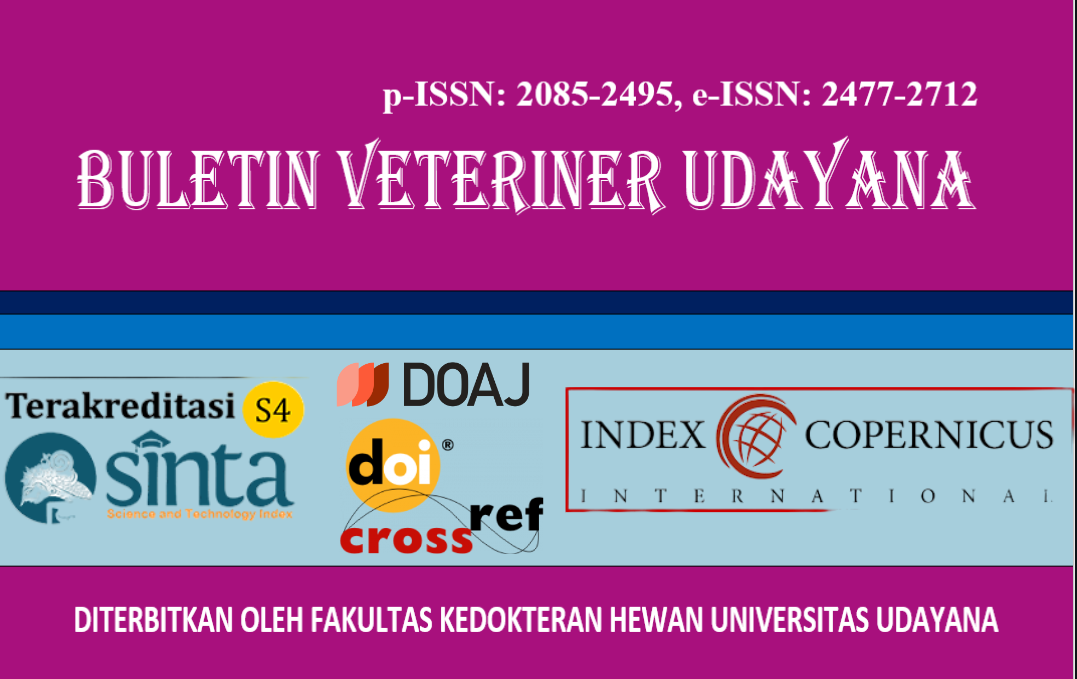SKULL MORPHOMETRY OF MOOR MACAQUES
DOI:
https://doi.org/10.24843/bulvet.2024.v16.i04.p31Keywords:
Moor macaques, morphometry, skullAbstract
Sulawesi island is the largest island in the Wallace area which can represent biodiversity in the form of endemic animals, one of these animals is the Moor Macaques (Macaca maura). Moor macaques are protected animals in Indonesia and are endangered animals. The rarity of this spesies will result in increasingly scarce information that can be obtained about this species, so research on skull morphometry is urgently needed. The aim of this research is to obtain information and scientific data about the skull morphometry of moor macaques. This study used 3 moor macaques skulls which were measured in 24 measurement positions using digital calipers. Skull volume data was collected by placing the skull in a measuring cup filled with water. The results of this study obtain bimaxillary breadth 43,86 mm; greatest length of skull 148,61 mm; bizygomatic breadth 96,60 mm; biauricular breadth 76,64 mm; cranial breadth 69,39 mm; basal length of skull 102,34 mm; nasion-basion length 84,14 mm; basibregmatic height 65,57 mm; length of maxillar tooth row 56,95 mm; length of mandible 103,40 mm; bicondylar breadth of mandible 74,91 mm; biorbital breadth 73,54 mm; bimalar breadth 90,92 mm; breadth of orbits 53,74 mm; postorbital breadth 47,28 mm; supramaxillary breadth 33,87 mm; bicanine breadth 41,02 mm; incisor breadth 26,25 mm; bimolar breadth 40,84 mm; length of maxillary molar tooth row 25,00 mm; facial height 40,39 mm; postostral length 95,77 mm; rostral length 65,21 mm; facial length 50,70 mm; and the volume of skull I is 150 ml, skull II 100 ml, and skul III is 100 ml. Based on the results, it can be concluded that all of the skull is of a male monkey. It is necessary to carry out further research on moor macaques considering that moor macaques are endangered animals and also the scarcity of scientific data about these monkeys.




